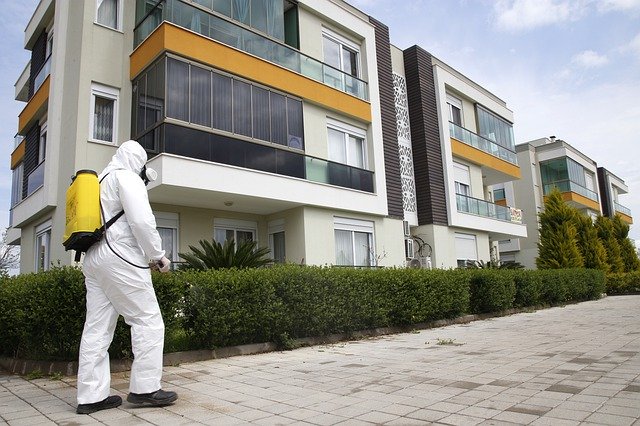The Case Against Spraying Disinfectant Everywhere
Raise your hand if you’ve seen a picture of a heavily suited worker spraying what’s assumed to be disinfectant on sidewalks and streets in the past four months.
It looks something like this:

For cleaning professionals, this image might be somewhat alarming. Mostly because it demonstrates what we already know—that the majority of people throughout the world have limited understanding of the science of cleaning.
Yet, when the general public sees images like this, they assume it’s what’s required to protect them from COVID-19.
This gap in knowledge has led to widespread use (misuse?) of chemical disinfectants. Unnecessary use of cleaning chemicals generates waste, cost and can lead to injury to both the people applying the disinfectants and the individuals in the buildings being cleaned in the wake of the current pandemic.
In short, spraying disinfectant everywhere—throughout schools, daycare centers, offices, hotels and restaurants—is a bad idea.
Let us explain.
A Health & Safety Issue
If it were just a few images circulating that misrepresent what’s truly needed to stop COVID-19 in its tracks, that’d be one thing, but the lack of education around proper disinfection practices is leading to injuries.
One recent report found that at the Adelanto Detention Facility in California, guards were “rampantly spraying [disinfectants]… every 15-30 minutes around housing units. The sprayed chemicals are coming into contact with individuals’ eyes, noses, mouths, skin, clothing, bedding, food and drinking water, on an ongoing basis.”
From headaches and nausea too painful blistering of the skin and swollen eyes, noses and throats, detainees housed in these areas experienced a variety of physical reactions from the misuse of the disinfectants.
Sadly, this is not an isolated incident. In April, the CDC reported that calls to poison control hotlines for cases involving cleaners and disinfectants rose significantly over the previous two years.
Insurance Journal magazine recently reports that in an average business, disinfectant overuse can impact up to 10 percent of people.
“Asthmatics, migraine sufferers, those with allergies or immune disorders or suppressed immune systems may experience symptoms [resulting from disinfectant exposure] such as memory loss, trouble concentrating, mood swings, irritability, headaches, seizures, nausea and vomiting,” said Dr. Claudia Miller, an immunologist, allergist and co-author of Chemical Exposures: Low Levels and High Stakes.
While there’s cause for concern, it’s important to recognize that disinfecting is important when it’s done properly using tested application methods. In pictures such as that shown above, spraying and fogging technology is used. However, emerging research has shown that these methods may not offer the efficacy of more traditional spray and wipe methods. As such, use of these methods should be reconsidered until additional testing is conducted.
Citing ineffectiveness and health concerns, the World Health Organization recently recommended against the use of spraying or fogging disinfectants for use against COVID-19. In their guidance document, they wrote:
“In indoor spaces, routine application of disinfectants to environmental surfaces by spraying or fogging (also known as fumigation or misting) is not recommended for COVID-19… spraying disinfectants can result in risks to the eyes, respiratory or skin irritation and the resulting health effects. Spraying or fogging of certain chemicals, such as formaldehyde, chlorine-based agents or quaternary ammonium compounds, is not recommended due to adverse health effects on workers in facilities where these methods have been utilized.”
Similarly, the Cleaning Industry Research Institute (CIRI) has also advocated against fogging and misting, in their recent recommendation, “Guidance for Decontamination of the Built Environment: Cleaning, Disinfection, Worker Protection and Post Cleaning and Remediation Assessment.”
Old Problem, Renewed Awareness
Even before the COVID-19 pandemic, we had a chemical handling issue on our hands. This post and infographic from a few years ago offers some important data around chemical accidents and injuries to workers. In pre-pandemic days, cleaning workers were experiencing an estimated 83,000 injuries from cleaning chemicals each year. Cleaning chemicals are a regular culprit in poor indoor air quality findings.
But as businesses across the country begin the process of reopening, communication and education around cleaning, cleaning science and cleaning for health is more critical than ever. Science must continue to drive our best practices, which we should regularly benchmark with other organizations and communicate with building owners and occupants. Cleaning workers not only tools to do the job, they need the education, training and personal protective equipment to use those tools effectively.
Here are five important things to remember when disinfecting any space, for COVID-19 or otherwise. Intensive disinfection efforts must be:
1) Conducted only after surfaces have been thoroughly cleaned.
2) Performed by trained staff.
3) Accompanied with the proper personal protective equipment.
4) Conducted in well-ventilated areas.
5) Coupled with other mitigation strategies, such as social distancing and regular hand washing.
If you use a systematic, engineered approach to cleaning like (OS1), there won’t be a need to spray disinfectant everywhere. And remember, effective cleaning contributes to a healthy indoor environment; it doesn’t pose additional health risks.



